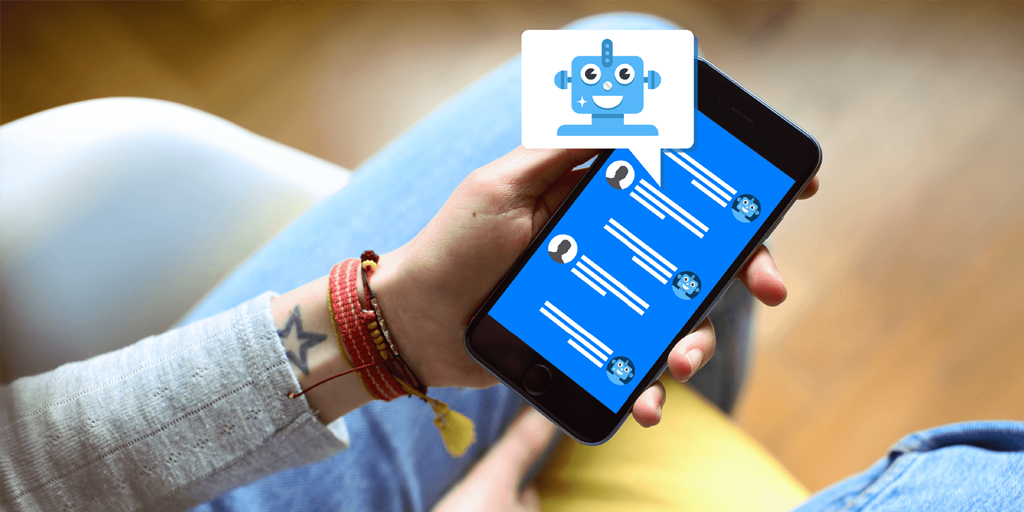
How to Build a Chatbot for a Website
In order to build new and long-lasting relationships with their customers, businesses large and small have always relied on innovative technology. At last, convenient business solutions were upgraded with AI, proclaiming 2018 “the Year of the Chatbot”. The long-anticipated day when customer service will be run by digital assistants has finally come and to the mutual pleasure of brands and consumers.
Now, business organizations are enjoying greater productivity and efficiency without any significant financial loss. Cutting-edge, yet cheap chat bot solutions are everywhere around, tirelessly becoming smarter and more skilled at solving less complex customer queries. They are available 24/7 across the digital realm, including the most popular social networks, messaging apps, SMS services and websites.
And the best thing about them is – chatbots are really easy to build.
Here’s how to design and deploy yours.
Define Your Specific Chatbot Goals
Building a chatbot is not a particularly arduous process. However, the number of steps that will lead you to the best possible result will depend on your specific needs and objectives – do you need a bot to replace your customer service agents, to drive your sales, or to simply keep the customers engaged?
And these questions are not the only ones you need to answer.
Since chatbots have many different applications in today’s business world, let’s stay focused on their end goal for now. Serving to simplify the customer journey, chatbots have been invented as a by-product of a changing economy that now focuses on two things – the customer and their experience.
Your first step is, therefore, to identify and get to know your target audience.
Identify What Your Customers Want
In 2017, 42% of customers were already using digital assistants. Though this is a lot, the stat also speaks of the other half of consumers who still prefer the old-fashioned way of communicating with a brand. Chatbots are widely popular, but there are still those who would rather talk to a human agent.
Because of that, you must determine the preference of your own target audience first and then act accordingly. The ways for doing so are numerous – you can create a customer survey or put a future chatbot option to a vote, analyze past and current on-site behavior or conduct a thorough research.
The results will show you not only whether or not you should deploy a chatbot solution at all, but also what kind of a chatbot your target audience would be happy to see on your website. Do they need pre-purchase support or traditional customer service? What are their common needs and pain points?
Discover the Best Role for Your Bot
Depending on your business needs and the needs of your customers, your bot can perform a number of different roles. Typically, they are built as customer support chatbots, sales bots or marketing bots.
Customer Support Chatbots
Customer support chatbots handle helpdesk tickets and solve customer problems. They can either respond to queries with predetermined questions or use out-of-the-box thinking to provide solutions.
Sales Bots
Sales bots act as personal shopping assistants to the website visitors who are looking to make a purchase by providing product recommendations and payment tips. They also cross-sell and up-sell.
Marketing Bots
The main purpose of marketing bots is to engage leads and convince them to convert into regular customers. They are especially great for retargeting and sending special offers, discounts, and coupons.
Of course, nearly every modern-day industry has a chatbot solution of its own. The chatbot market already boasts a wide range of solutions for healthcare, travel, banking, and education, for instance, but you can always define your own goals and build a specialized bot for the purposes of your niche.
Choose How Much Your Bot Can Do
No matter the specific type and function, all chatbots can be retrieval or generative solutions. The difference between them determines how smart a chatbot actually is, and how much it is able to do.
Retrieval Bots
Retrieval bots are what we call “basic solutions” – scripted beforehand, they can carry out only the exact conversations and scenarios that they’ve been designed for, without ever getting smarter at all.
Generative Bots
Unlike retrieval solutions, generative bots are embedded with natural language processing (NLP) and machine learning capabilities, which means that they are able to learn and to think outside of the box.
Create Bot’s Personality and UI Elements
Both the bot’s personality and UI elements should be custom-tailored with a specific target audience in mind. The first implies the bot’s name and its conversational tone – will it be friendly and informal or strictly professional? On the other hand, the bot’s UI elements help create a frictionless experience.
The most essential UI elements that every chatbot must include are get started and reply buttons with which the user initiates and navigates the interaction. A bot can also have buttons that narrow down the conversation to certain scenarios as if commands, smart reply buttons that offer pre-made response options, cards for organizing information, and menus that allow the user to change settings.
Prepare Your Bot for Human-Like Interactions
It’s always better to have a bot that seems less robotic and is capable of introducing the much-needed human touch. Because this requires both NLP and machine learning as the essential elements of AI, it can hardly be accomplished with retrieval bots. Also, human-like interactions depend on great scripts.
It’s true that generative bots can give out unscripted responses, but they still need a good foundation for learning. AI chatbots must be trained, so spend some time on creating scenarios and bot’s responses on certain input. Formulate if commands and dialogue branches for all individual scenarios.
Choose the Best Bot-Building Framework
Now that you’ve determined the function, personality and overall approach to your chatbot solution, you’re only one step away from having a deployable digital assistant. This is the time to choose the best chatbot-building toolkit, and the ones we recommend are Microsoft Bot Framework and Api.ai.
While Microsoft Bot Framework does a swell job at helping you create conversational capabilities and more or less natural conversational flow, Api.ai may be better for designing sophisticated generative bots capable of processing human language and handling more complex problems and UX scenarios.
Whatever you choose, opt for a chatbot-building solution that doesn’t require a lot of technical knowledge and coding experience. That way, you’ll be able to spend more time working on what truly matters – your bot’s actual performance and personality, which ultimately determine the quality of user experience and allow smooth on-site customer journeys. After all, that’s what bots are here for.


